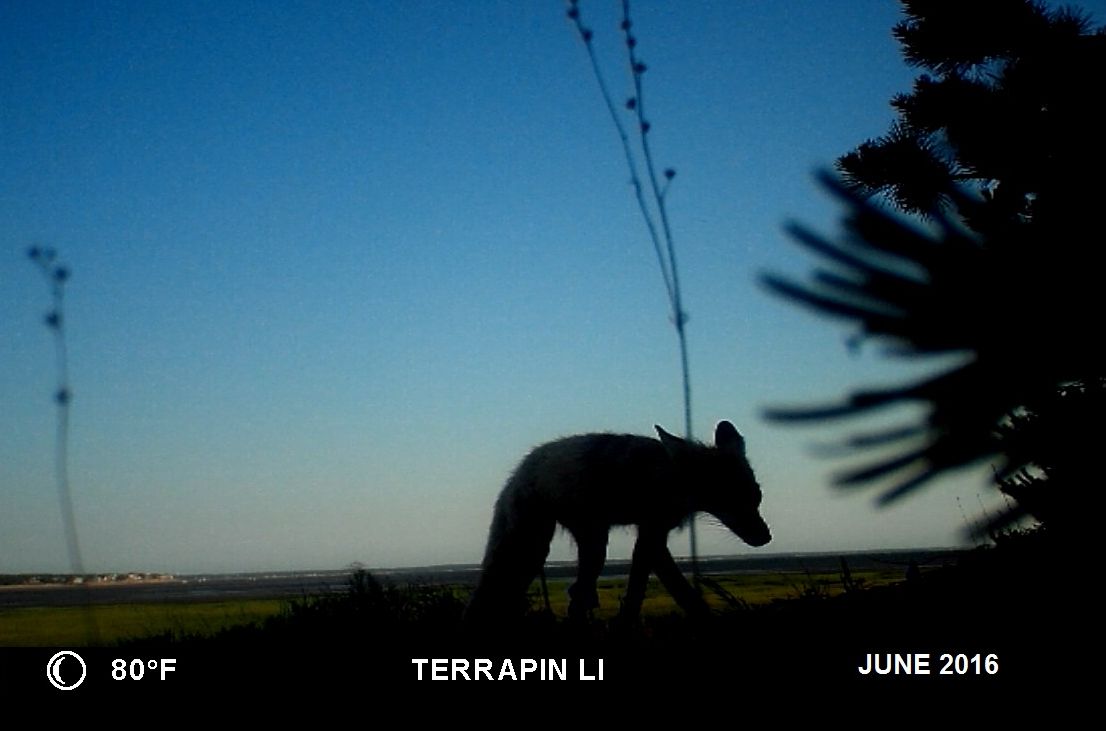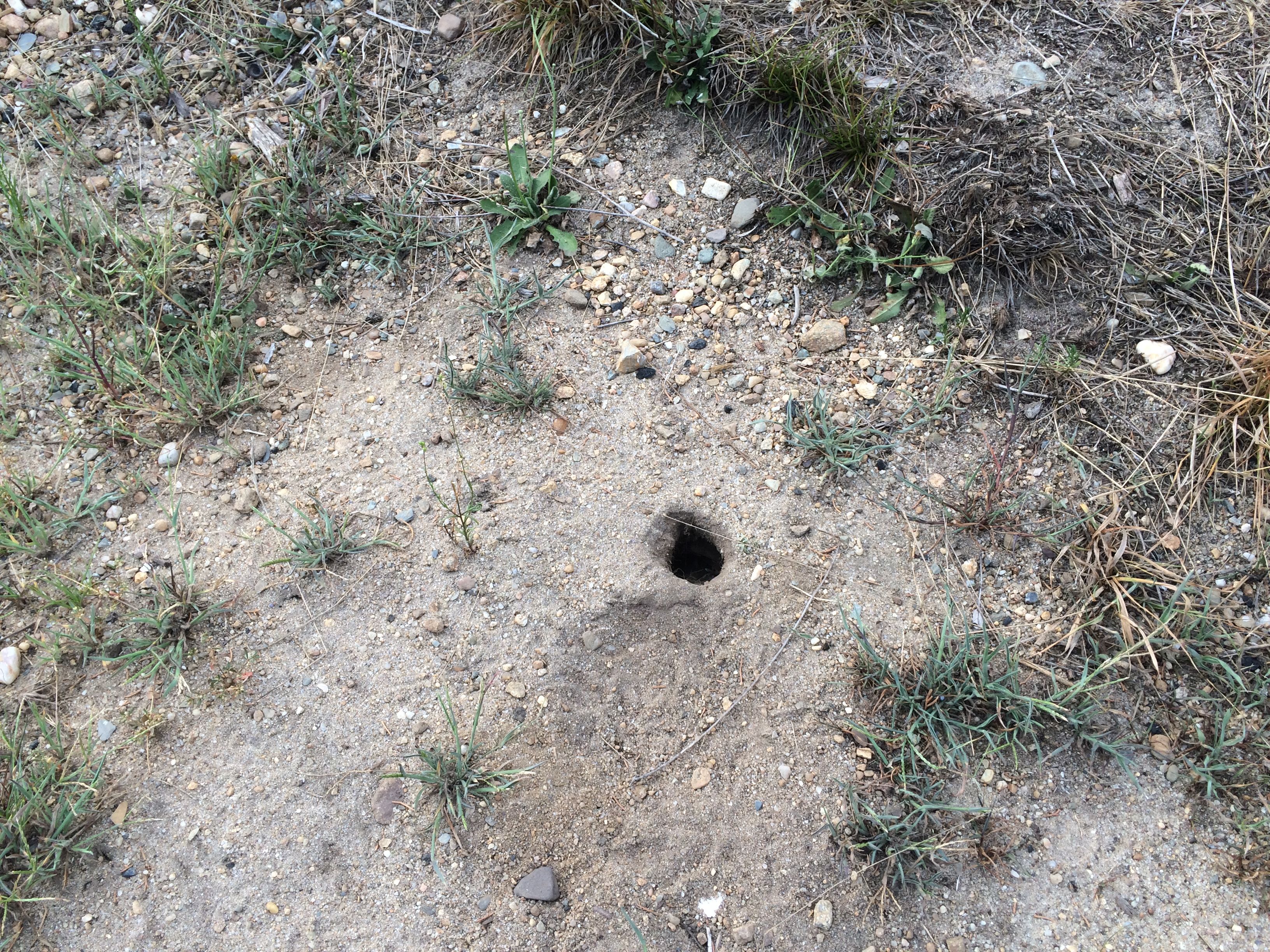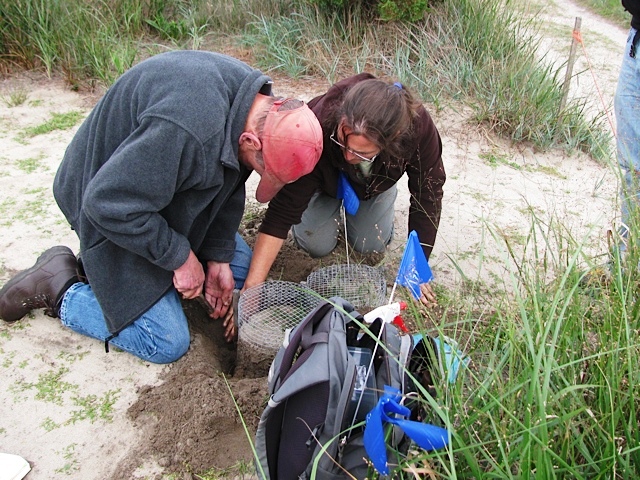
Terrapin Field Team Lead Rebecca Shoer measures a hatchling (Olivia Bourque)
This was my second year at the helm of our diamondback terrapin conservation project. Although I thought I knew what to expect during the season, field work is never complete without a few curve balls!
This year had some interesting (and, for the most part, positive) twists and turns compared to 2015. I was extremely fortunate to have my assistant Olivia Borque always ready for whatever turtle action came our way, and to have our ninety volunteers that make this project possible!
The biggest distinction of the 2016 season was the sharp decline in local red fox populations. This was bittersweet for us nature lovers: although fewer predators meant it was a banner year for terrapins, the fox population has been decimated by the spread of mange. This disease, caused by mites, is extremely painful, and the few foxes we did spot this year were in sad shape. However, nature is full of booms and busts, and we were thankful for a year that will hopefully help boost our local threatened terrapins before the foxes inevitably rebound.

Red fox caught on game camera on Lieutenant Island where foxes still managed to hold sway this season.
Due to this drop in fox population, this year saw the most total nests protected ever in our terrapin program! We ended the season with 83 protected terrapin nests at WBWS, and 69 at Lieutenant Island. Our other sites, including Old Wharf Road, Indian Neck, White’s Lane, and Eastham also had very successful protection rates.

A wild nest where all egg shells were found at the bottom–meaning all hatchlings made it out and are on their way! (photo by Rebecca Shoer)
In addition, we also had a significantly higher number of wild and depredated nests. Wild nests are very exciting to find: these are nests that were missed by both human and predator patrols, hatching out successfully on their own. And although depredated nests may make us turtle people feel discouraged, when we added together the grand total of nests at each site, the results were record breaking: 160 total nests at Lieutenant Island, 113 at WBWS, and 236 in Eastham! We hope that this increase is a result of our conservation program—as the females released at the start of our project in 2005 begin hit sexual maturity, we expect more and more nests to appear.

This year we were able to protect two box turtle nests, and when the first nest hatched everyone was eager to meet these unique creatures. Eastern box turtles are a Massachusetts Species of Special Concern and their nests are quite difficult to find, so we are always excited to bring more into the world:

A box turtle hatchling, fresh from the nest. (Photo by Susan Newlin)
Although we may have had fewer foxes this year, that didn’t prevent at least one of them from some very dramatic, and in some cases destructive, depredation attempts. Multiple times our Lieutenant Island monitors were greeted with a garden that had been ravaged by a determined fox. Luckily, we were able to rescue most of the hatchlings from these nests; however, a few suffered serious injuries pinned against the cages:

A dramatic fox dig at Lieutenant Island. Note hatchlings stuck between nest mound and the first PE. (Photo by Karen Strauss)
Finally, we are always delighted and amazed by the tiny creatures that come popping out of our protected nests. Some are brought back to the sanctuary’s wet lab for some extra rest and relaxation before making their ways out into the big wide world. In most cases, the hatchlings we keep temporarily have enormous yolk sacs, which should be absorbed fully before the hatchling is released. Although some of these look quite dramatic, in a few days’ time the yolk will be completely absorbed!

A terrapin hatchling after a few days in the wet lab. Photo by Rebecca Shoer.
As the season winds down and some of our volunteers start to migrate south, it’s time for us to pack away our PEs and send our last hatchlings into the wild. It was particularly gratifying for me to see that our program is still running strong, as we once again released over 3,000 hatchlings around Eastham, Orleans, and Wellfleet. Such an extensive and incredible project relies on the dedication of our many volunteers, who are willing to spend hours of their days and weeks protecting a threatened species. I have to thank all of my volunteers, veteran and newbie, for all of their help these past few months. These turtles have a chance to flourish here because of their efforts!

Volunteers tending nests (photo by Norma Barquet)
Rebecca Shoer has led Wellfleet Bay’s field teams for both nesting diamondback terrapins and sea turtle rescue since 2015. She also was a member of the 2016 Coastal Waterbird team.


Great article – and great news!